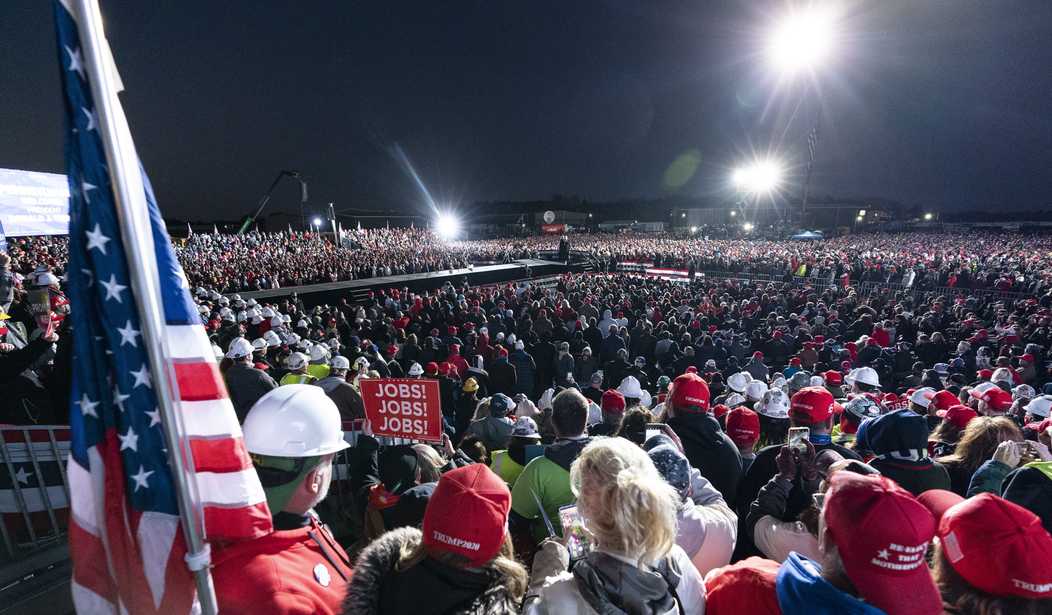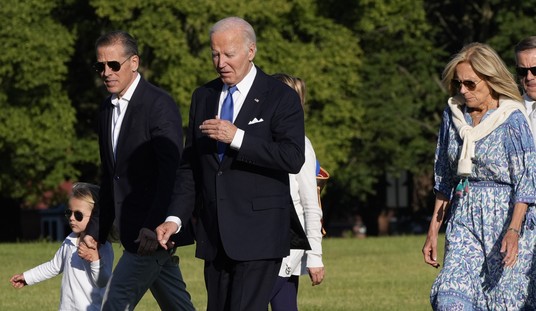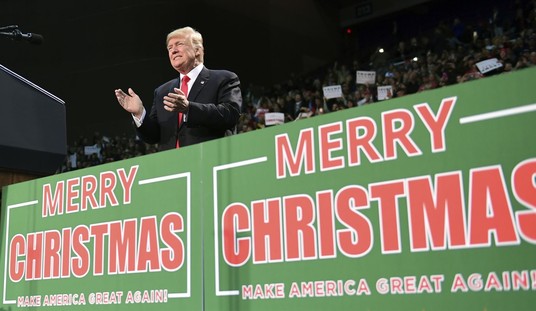What we are witnessing in Washington DC this week is a concerted effort — by the establishments of both parties — to remove Donald Trump from the map of politics in the United States, to delegitimize everything done by the Trump Administration over four years as justification for a rollback, to validate all the claims made against him by his opponents in both parties, and to brand his supporters as undemocratic and anti-American in order to fracture the non-traditional coalition of interests he brought together.
This is an effort — by the establishments of both parties — to render Trump and his coalition ineffective as a political movement by making it radioactive to any conservative politician who might try to harness it in pursuing a similar policy agenda in the future.
Entering the Capitol by acts of violence was an existential threat to the established order. That cannot be tolerated or condoned. Not that it should be.
The Members of Congress present in the Capitol on January 6 were assembled to perform a function they were obligated to perform by the Twelfth Amendment to the Constitution. They were acting — on both sides — under legislation passed by Congress in 1887, the Electoral Count Act. The legitimate performance of duties imposed by the Constitution, obligated to them by their Oath of Office, cannot be obstructed without consequence. The identification and prosecution of those who did so — regardless of motive — is a non-ideological response, and the Department of Justice, headed by Donald Trump appointees, is doing just that.
But what is happening now in Washington is an effort by the Establishment interests of both parties to stuff back into the bottle the Genie that Donald Trump let loose with his campaign and victory in 2016.
With very little structural organization or outside funding, Donald Trump effortlessly destroyed a large field of GOP aspirants to the White House. He did so, in large measure, by hammering in a “take no prisoners” fashion the three prior winners of the Republicans’ contests to be the GOP leader — Pres. Bush, John McCain, and Mitt Romney. The message was clear — he didn’t intend to inherit the GOP establishment as the party’s next candidate; he wanted to gut the GOP establishment and replace it with one he believed better reflected the coalition he was assembling with a non-traditional mix of political and economic issues. The message resonated as only he predicted it would to the frustration of the Establishment and the consternation of the press.
He next defenestrated the quasi-monarchical head of the Democrat Party. Hillary Clinton’s coronation as the first female President of the United States had been planned for years — although Barack Obama forced a delay of that inevitability and robbed it of some historical significance as well. But the nomination by the GOP of Donald Trump to be its candidate for President to oppose her was seen by the Establishments and the media as a farcical final act of a moribund GOP sliding further into permanent minority status.
Only that didn’t happen.
A potential existential threat to the Establishments of both parties became a reality in January 2017. Donald Trump seized the GOP agenda, and the extreme left of the Democrat party seized the agenda of the Democrats in reaction to Donald Trump.
The voters who elected Donald Trump, and then increased their vocal support for his policies over the next two years, reflected a new coalition of interests stitched together by his rhetoric and action on his policy priorities. Probably more than any other single feature of his first two years in office, Trump’s willingness to act in ways consistent with his rhetoric — long a shortcoming of GOP Presidents — won him the increasing adulation of GOP AND other conservative voters. The GOP had suffered for over 30 years at the hands of GOP politicians who talked a good game but shrank from the fight with the political opposition once it was joined. You did not need to agree with Pres. Trump on every policy or statement in order to develop an appreciation for the fact that he brought to the Office of President the kind of “make progress” demands which are common in corporate boardrooms but lacking in government conference rooms.
The mid-term elections of 2018 derailed the Trump Administration’s ability to act through legislation by putting the Democrats in control of the House. But Trump’s coalition saw he was willing to compromise to make progress. His approach was “transactional,” not “ideological.” He would give ground to gain ground. When Nancy Pelosi and Chuck Schumer realized that to be the case, their overriding concern became to not allow any Trump Administration policy victories that he could champion in 2020. Their agenda meant gridlock for political ends was their only option as beating Donald Trump in 2020 was the only item on the Democrat agenda.
But it still took the combined effects of a more than three-year-long baseless investigation about collusion with Russia, a worldwide pandemic that shut down most of the US economy, an unrelenting willingness of the media to negatively characterize every issue regarding the Trump Administration, a willingness by the media and “Big Tech” to actively suppress information harmful to Joe Biden, a complete lack of interest in the media to Joe Biden’s physical and mental fitness for office, and unprecedented changes in the way voting was conducted to improve Biden’s chances of winning in order to defeat Donald Trump.
But those combined and coordinated efforts came at a cost — that being a conscious sense of electoral disenfranchisement by 75 million people who voted for Donald Trump’s re-election only to see him lose by thin margins in venues where anomalous circumstances seemed to be determinative of the outcome.
Setting aside all claims of fraud — which the Trump campaign has never demonstrated with substantive evidence in a proper forum — the combination of obvious and not-so-obvious efforts by the party establishments to prevent a second Trump term cannot be erased. It will continue to animate the coalition that Trump assembled, and it will continue to give support to the policy issues he pushed to the front of the debate.
That is what both Establishments now fear. Their hegemony over the national political discourse was disrupted by Donald Trump’s Presidency and calls into doubt their ability to maintain themselves as the drivers of the debate, with the issues framed by their interests.
The endgame for them now is to prevent Pres. Trump from having any future in Washington by impeaching and removing him. The Democrats also want to stigmatize every Republican who failed to join the ranks of the “NeverTrumpers,” and to render all such individuals irreparably “damaged” by their association with the Trump Presidency. The Republican Establishment is being cowed into standing by while the Democrats do this with the media’s help.
The final step is to label the Trump coalition voters as un-American in order to fracture it as a political movement going forward. This is necessary to prevent another Republican from making an effort to harness it once again in the months and years ahead.
What the Democrats and their media enablers cannot know — and only time will reveal — is the degree to which their efforts over the past 24 months will drive the Trump coalition members to the polls in 2022, maybe in even larger numbers. Those voters — and Trump fans who failed to vote — will now have two years to experience exactly what happens when their policy preferences are cast aside.
The issues that animated that coalition are not going away. Hence the need to stigmatize the coalition itself.














Join the conversation as a VIP Member